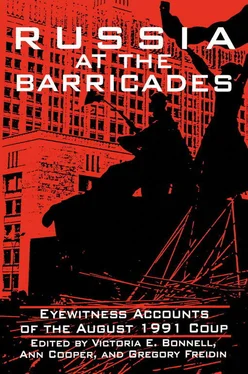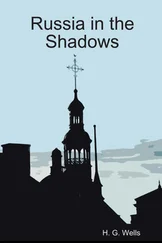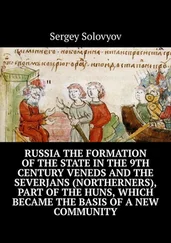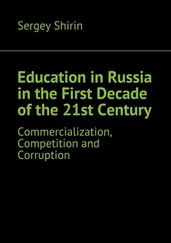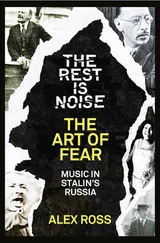Ironically, by the spring of 1994, the cause of the August 1991 putschists had become conflated with that of the leaders of the October 1993 uprising—Yeltsin’s erstwhile allies. In late February 1994 Russia’s newly elected State Duma passed an amnesty covering those charged with crimes in connection with both events. The trial of the coup plotters was terminated, and Rutskoi and Khasbulatov were released from prison. Then, in mid-March, the case took another strange twist. Ruling in favor of the prosecutor’s appeal, to the effect that amnesty could not be granted to anyone who had not been tried and convicted, the Supreme Court ordered a resumption of the trial of the August 1991 putschists. Matters were at this impasse as this book was being sent to press.
* * *
The accounts that follow have been divided into five sections, each focusing on a particular group or aspect of the events of August 19–21, 1991. In selecting from a wide range of letters, reports, interviews, transcripts, and documents, the editors have attempted to include in the volume accounts by men and women, Russians and non-Russians, who personally took part in the August days. Since we wanted to show the events from many different angles, depending on the location and orientation of the individual, we have tried to incorporate material from a wide spectrum of people from many walks of life, but there are some gaps. We were unable to find an account by a veteran of the Afghan War who helped to defend the White House or from a businessman who provided supplies for the democratic resistance. The actions of these groups are recounted by others.
Part I, “Saving the Old Country,” is devoted to the putschists. This section includes the major decrees, proclamations, and pronouncements of the State Committee for the State of Emergency as well as the full transcript of the press conference conducted by members of the Committee on August 19. Soon after the coup, the putschists were interrogated by government investigators preparing the legal case against them. We have included excerpts from the transcripts of interrogations of Yazov, Pavlov, and Kriuchkov. These selections show the motivations and outlook of the men who directed the putsch.
In Part II, “The Public Reacts,” eight Russians and Americans of diverse backgrounds give their personal impressions of the coup. Their accounts are based on observations of and participation in events that took place in Moscow, Leningrad, and the provincial city of Saratov. Three of the selections are by Russian citizens (the anonymous author of the “Letter from Moscow,” Vladimir Petrik, and Valerii Zavorotnyi); one author is an émigré (Gregory Freidin) and another the son of émigrés (Serge P. Petroff); and three more accounts are by American scholars (Victoria E. Bonnell, Lauren G. Leighton, and Donald J. Raleigh).
Part III, “In High Places,” shifts to the centers of power and influence among the opponents of the coup. Here we see how some of the most powerful men in the country responded to the putsch. This part begins with Gorbachev’s lengthy personal statement about what happened to him between the afternoon of Sunday, August 18, and Wednesday, August 21, when the putschists held him incommunicado at his summer residence in Foros. Gorbachev’s account is followed by the appeal “To the Citizens of Russia” issued by Yeltsin, Silaev, and Khasbulatov, and other appeals and decrees issued by Yeltsin during the first day of the coup. We have also included Yeltsin’s speech to the Russian parliament on Wednesday, August 21, when victory over the plotters seemed assured. Here Yeltsin gives his own version of the events.
Part III also contains reports and interviews from six other leading political figures in Moscow, Leningrad, and Dushanbe. These authors are generally quite well known and influential figures in Russian political life. Among them are Nikolai Vorontsov, Minister of the Environment under Gorbachev; Yevgenii Shaposhnikov, head of the Soviet Air Force at the time of the August coup; Vladimir Shcherbakov, a Deputy Prime Minister in the Gorbachev government; Davlat Khudonazarov, a filmmaker from Tajikistan who rose to political prominence under Gorbachev, serving as People’s Deputy in the USSR Supreme Soviet and a member of the Central Committee of the Communist Party; Anatolii Sobchak, the Mayor of Leningrad; and Aleksandr Yakovlev, a former CPSU Politburo member and a leading architect of perestroika.
Part IVfocuses on an event—the defense of the White House against military assault by the putschists. In this section we have included accounts of the activities both inside and outside the White House, with particular attention to the night of August 20–21, when three young men died defending the barricades. Here we hope to show the character and composition of the public opposition that gathered at the White House and the extraordinary atmosphere among those who risked their lives on the barricades. The reports, letters, and interviews are from an American student, Theresa Sabonis-Chafee; a well-known Russian ultranationalist writer, Aleksandr Prokhanov; an American journalist, Michael Hetzer; an anonymous Russian man; a Russian scholar, Aleksei Kozhevnikov; a People’s Deputy to the Russian parliament and democratic political activist, Viktor Sheinis, and his wife, the sociologist Alla Nazimova.
Part Vof the volume, “Getting the News In and Out,” is devoted to the role played by the media. The mass media—both Soviet and foreign—were critically important during the putsch. Despite heavy censorship, the shutdown of most newspapers and radio stations, and the suspension of regular television programming, the media continued to function outside official control during the three days of the coup. As these accounts show, adverse conditions did not prevent television, radio, and newspaper journalists from transmitting critical information to the Soviet people and abroad. The foreign press is represented here by Iain Elliot of Radio Liberty and Ann Cooper of National Public Radio. The television journalist Sergei Medvedev recounts his experiences reporting for “Vremia”; Valerii Kucher describes the efforts of journalists to publish a collective underground newspaper; and Tatiana Malkina reports on her participation in the August 19 press conference.
* * *
A Chronology of Events has been provided at the conclusion of the volume with a timetable of developments during the coup, day by day, hour by hour, sometimes minute by minute. This will help to guide the reader who is interested in sequential coverage of the events of the three days and will serve as a point of ready reference. [36]
In the early morning of August 19, 1991, eight high-ranking Soviet officials made an announcement that stunned the country and the world: President Mikhail Gorbachev had resigned due to illness, and his government had been taken over by a State Committee for the State of Emergency (GKChP). The committee included Vice President Gennadii Yanaev (who was named Acting President); KGB head Vladimir Kriuchkov; Defense Minister Dmitrii Yazov; Minister of Internal Affairs Boris Pugo; Prime Minister Valentin Pavlov; Oleg Baklanov, First Deputy Chairman of the National Defense Council and leader of the military-industrial complex; Vasilii Starodubtsev, chairman of the Peasants’ Union; and Aleksandr Tiziakov, President of the USSR Association of State Enterprises and Industrial Groups in Production, Construction, Transportation, and Communications.
Through their proclamations and appeals, their one and only press conference, and their subsequent interviews with interrogators, the members of the Emergency Committee articulated their version of the events leading up to and during the August crisis.
Читать дальше
